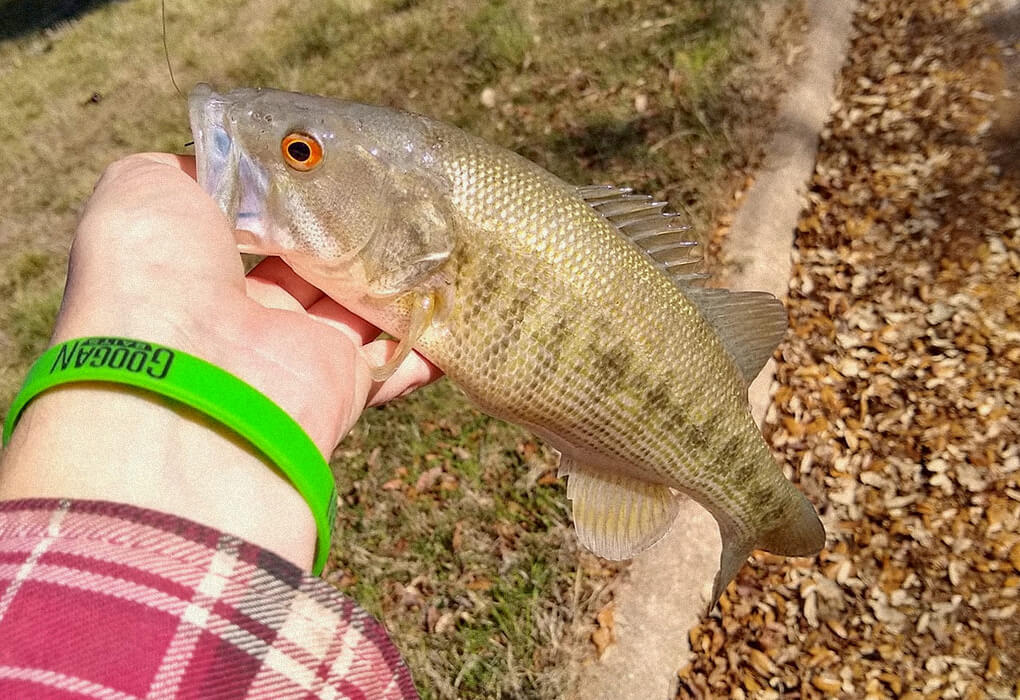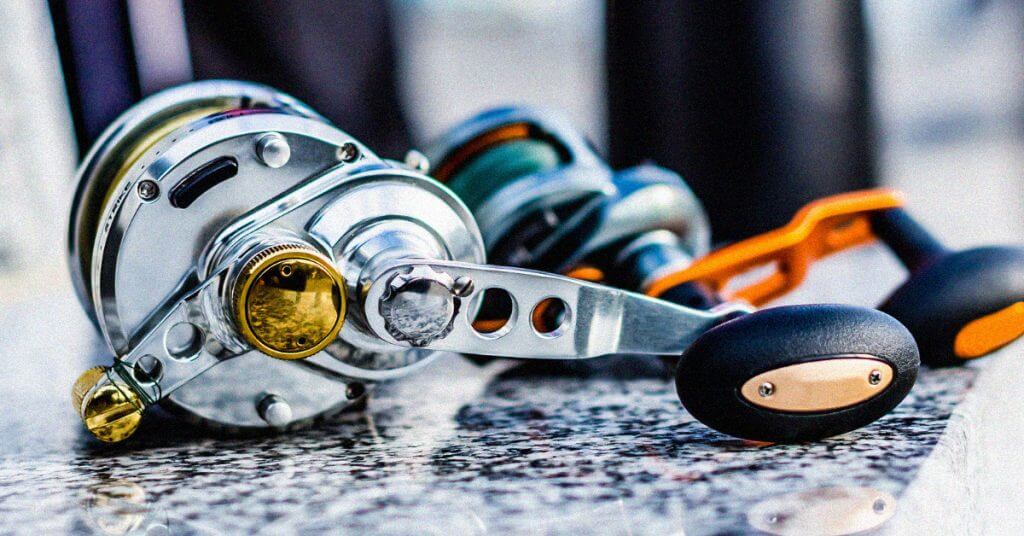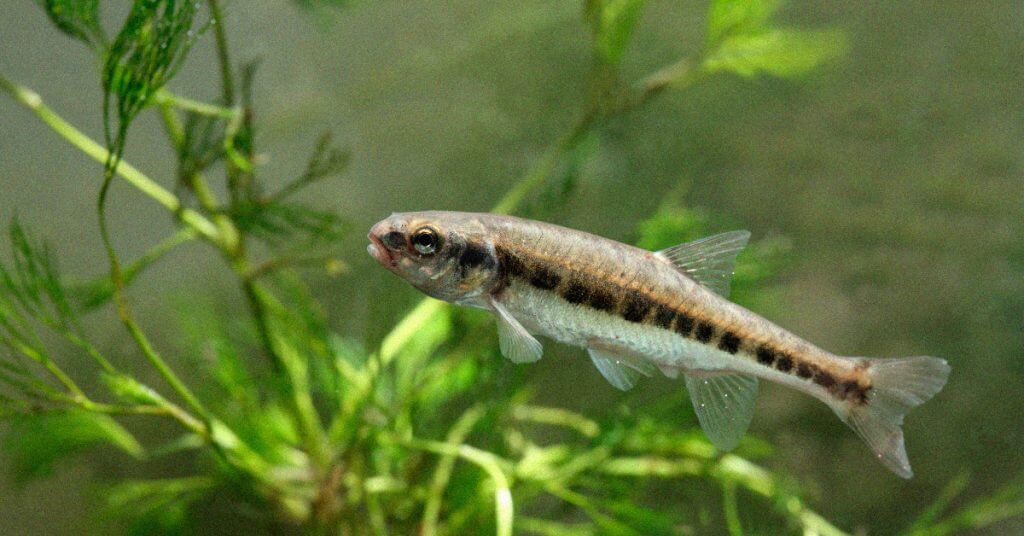If you slapped both of these on the fish filet table, the whole striped bass vs white bass argument gets simple in a hurry.
One is pretty bulky while the other is slim. End of story, right? Well, fortunately, there’s more to discuss than just their size disparities.
Before we get to their differences, it’s important to note that white bass (barfish, streaker, sand bass) and striped bass (striper, linesider, rockfish) have a few things in common.
Both have similar markings, similar colorations, and similar behavioral patterns.
Sometimes they share the same habitat, though stripers are saltwater as well as freshwater fish.
Thanks to hatcheries in Florida and South Carolina, we also have the hybrid striped bass (sunshine bass or whiterock bass), which makes things even more confusing for newbie anglers.
Table of Contents
Identifying White Bass vs Striped Bass

What does a striped bass look like? A white bass? As noted above, the shape and size disparity between white bass and striped bass is immediately noticeable.
It’s the most distinguishing difference between the two fish. After that, it’s a matter of nitpicking. For beginner and intermediate anglers, there’s a lot to nitpick if you want to break down the differences completely.
Markings
White bass, striped bass, and hybrids all have one thing in common—a series of lateral lines that look like a series of tightly formed dots running the length of their bodies.
With stripers, most of these lines are pronounced and well-defined all the way back to the tail.
White bass have very similar lines, however, they don’t quite run as far back as a striped bass, with only one running all the way to the tail.
Markings aren’t limited to just their bodies either. Both fish have tooth patches. It isn’t really a tooth, but a distinctive marking on the back of the tongue.
The tooth patches in white bass are solid, single markings, circular in shape. The tooth patches in stripers and hybrid stripers are two small, vertical markings, side-by-side.
Shape and Size
One of the easiest differences between the two is their shape. White bass are rounded and more vertical than stripers, while the latter are shaped like torpedos, with a more streamlined form.
The average white bass is just a shade under a foot in length while a striped bass can reach 25 lbs or more and averages two feet in length.
Habitats and Spawning

White bass aren’t picky and, like crappie, anglers will find them just about everywhere in North America, South America, and Mexico.
They aren’t picky with their freshwater environments either, preferring lakes, ponds, reservoirs, and rivers (so long as the current is leisurely).
They head to the rivers, early in the springtime, fighting the current to spawn over rocky areas, where the eventual eggs will float to the bottom and stick to the rocks or other, underlying debris.
When they move is dependent on water temperature, the current weather, and the current.
Striped bass are open-water fish and, although they’re found in Mississippi, Louisiana, Georgia, and Florida, they are predominantly found in the Atlantic and in freshwater rivers that feed into bays and the Atlantic.
Since they spend most of the year in deep-bodied water, it’s a mad rush to the North and South Carolina rivers, along with a large section of the New England coast, for the spawning season.
Just like shad, stripers are anadromous, meaning they head up the current to spawn.
When it comes to wiper vs striped bass, striped bass hybrids imitate white bass and other bass species during the spawning season.
Techniques for Catching Each
White bass are a lot like pompano, using their flat bodies to take advantage of the current, making it feel like you have a much larger fish on the line, though the state record was set in Alabama at less than five pounds.
For a small fish, they put up a pretty good fight.
New anglers will likely hear all kinds of fishing tips but the best tip for fishing white bass is to hit them either right before they head up current for the spawn or in the middle of it. They tend to congregate (drops and ledges) in massive populations before heading upstream.
As far as lures, grubs and small tubes are great white bass lures in the springtime months. Either before or after the spawn, crankbaits and jerkbaits should dominate your tackle.
Usually, when white bass congregate before the spawn, they hit the surface hard, tearing up the baitfish. It’s a good time to use shallow lures and minnows.
Spawn is a great time for striper fishing, catching them as they come in from the open water. But they prefer currents, where fresh and salt meet, throughout the year.
Chunk-baits are great for schoolies, with a surf rod and braid or monofilament line in the 30 lb + range.
Sandworms, sand fleas, shrimp, crabs, and flies all make great baits and, for lures, swimming plugs, and small poppers are some of the most popular striper lures.
What is a Hybrid Bass?

We’ve touched on hybrid stripers a few times but, in this scenario, hybrids are a combination of white bass and striped bass, basically created in Florida hatcheries.
They are broader than striped bass but longer than white bass. They’re also known as sunshine bass or palmetto bass. Unlike their striped bass kin.
In general, hybrid bass are simply a combination of two or more species of bass and generally populate the same fisheries as their parent species.
Frequently Asked Questions
Are white bass worth eating?
White bass are a bit fishy but are still worth eating. They have a comparable taste (if not texture) to crappie.
What is the difference between striped bass and sea bass?
There really isn’t a difference because “Sea Bass” is more of a collective term for multiple species, some of which are bass and some which aren’t.
What’s the difference between hybrid stripers and white bass?
A hybrid striper is the progeny of white bass and striped bass. It has some white bass characteristics, albeit with broken lateral lines and a slimmer body.
Is the stripers’ black striping on its back and sides only?
Stripers have a bright white belly, with no stripes running down it.
What are some recipes for white bass?
There are a lot of good ways to cook white bass, including pan-fried with lemon and garlic sauce, grilled with lemon, and blackened.
Lemon helps to offset that aforementioned, fishy taste that some don’t prefer.
Conclusion
Fortunately, the striped bass vs white bass comparison is not an overly complicated one. The differences between them are simply too stark.
This is especially true when you consider the sheer size difference between them, with the size heavily favoring striped bass.
However, most of the confusion stems from junior striped bass, striped bass hybrids, and white bass comparisons.
Once you understand the tiny but unique differences in their line patterns, along with their tooth patches, you’ll clear up the differences in no time.




